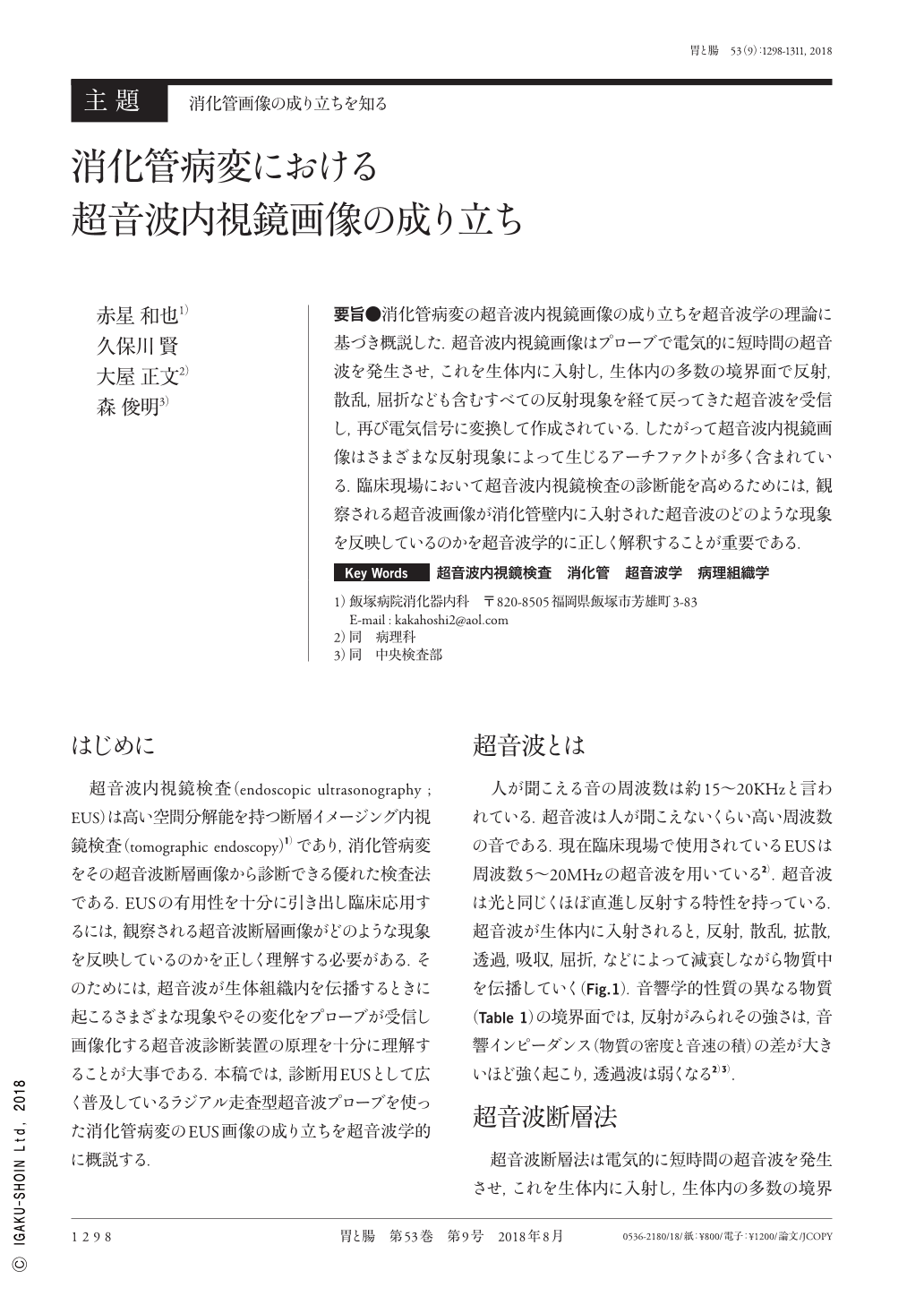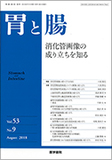Japanese
English
- 有料閲覧
- Abstract 文献概要
- 1ページ目 Look Inside
- 参考文献 Reference
- サイト内被引用 Cited by
要旨●消化管病変の超音波内視鏡画像の成り立ちを超音波学の理論に基づき概説した.超音波内視鏡画像はプローブで電気的に短時間の超音波を発生させ,これを生体内に入射し,生体内の多数の境界面で反射,散乱,屈折なども含むすべての反射現象を経て戻ってきた超音波を受信し,再び電気信号に変換して作成されている.したがって超音波内視鏡画像はさまざまな反射現象によって生じるアーチファクトが多く含まれている.臨床現場において超音波内視鏡検査の診断能を高めるためには,観察される超音波画像が消化管壁内に入射された超音波のどのような現象を反映しているのかを超音波学的に正しく解釈することが重要である.
Imaging mechanisms of EUS(endoscopic ultrasonography)of gastrointestinal lesions are outlined using the ultrasonography theory. Ultrasonic waves are generated electrically for a short time period using a probe then emitted into the body and return via various types of reflection phenomena, including reflection, scattering, and refraction, at several boundary surfaces of the body. EUS images were created by receiving the returning ultrasonic waves and converting them back to electric signals. Consequently, EUS images contain many artifacts caused by reflection phenomena. To improve the diagnostic accuracy of EUS in the day-to-day clinical setting, it is important to interpret the EUS images correctly to reflect the types of ultrasonic wave phenomena present in the gastrointestinal wall.

Copyright © 2018, Igaku-Shoin Ltd. All rights reserved.


